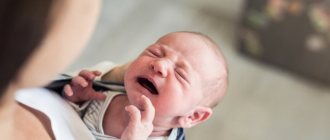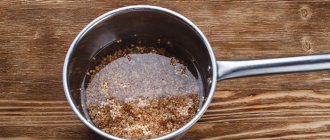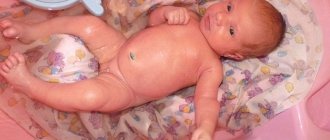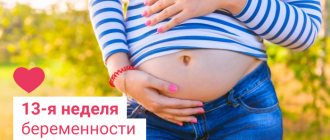Lactostasis is a common disease that occurs in women at the beginning of the postpartum period. The main symptom is stagnation of milk in the lobules of the mammary glands. Let's talk about the features of this condition and massage for lactostasis.
The development of the disease is caused by incomplete emptying of the mammary glands or narrowing of the ducts. Treatment is chosen depending on the stage of lactostasis.
One of the most effective therapeutic methods in the early stages is breast massage; in later stages, treatment is supplemented with medications.
Causes of lactostasis
Among the reasons leading to stagnation of milk in the mammary glands are the following:
- refusal to breastfeed a child;
- violation of feeding technique;
- too infrequent or irregular emptying of the breast;
- wearing a bra that doesn't fit;
- injuries and microdamages of the chest;

Stress
Overwork
Refusal to feed - prolonged exposure to a stressful situation;
- overwork;
- Breast compression during feeding;
- inability to completely empty the mammary glands due to their large size or sagging;
- congenital anomaly of the nipples or milk lobes;
- low sucking activity in the child.

Sleeping on your stomach
Hypothermia
Sleeping on the stomach and hypothermia also contribute to impaired milk flow.
What is a device called a breast pump?
So, a breast pump is a (mechanical, vacuum, electrical) device that is intended exclusively for expressing maternal breast milk. Such devices can be either manual (powered by the power of the arms/legs) or electric (those that operate from the network or batteries).
Modern women can use a breast pump for completely different, always good reasons. A breast pump can be used by a woman:
- To continue breastfeeding during forced (for various reasons) separation of a nursing mother from her child.
- For expressing the remaining ore milk when the baby is insufficiently active or weak.
- To stimulate full lactation in those women who naturally have too low milk production.
- And even for the induction of full lactation in those women who take adopted children.
- And of course, to relieve swelling of the mammary gland during lactostasis, or even mastitis.
In other words, a woman can fully use a breast pump in all cases without exception when she needs high-quality breast expression. However, doctors consider the opinion of many ordinary people to be absolutely erroneous that in case of lactostasis or mastitis, only a breast pump can completely eliminate congestion and inflammation.
Sometimes, to get rid of stagnation of breast milk, a woman may need massage, moderately warm compresses, and even physiotherapeutic procedures.
In addition, it is important to say that such devices can differ significantly from each other. Thus, according to their area of application, all breast pumps are divided into clinical devices and household devices. A clinical breast pump is a professional medical device for use strictly in the conditions of certain medical institutions.
Household breast pumps are more compact devices intended for individual home use. Of course, when a household appliance, like a clinical one, has an electric drive, it is much more convenient for a woman. But such devices also have a significant drawback - as a rule, electric pumping devices are prohibitively expensive.
Symptoms of the disease
The first alarming symptoms indicating the appearance of lactostasis are pain and discomfort in the chest area. Other signs of the disease include:
- swelling;
- changes in the structure of the breast - it becomes firmer to the touch;
- redness of the skin of the chest;
- compaction at the site of stagnation of milk.
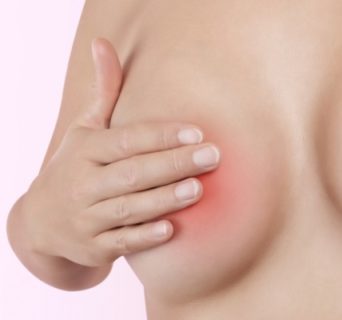
If treatment is not started in a timely manner, fever, chills, and general weakness of the body may appear.
At the beginning of the disease, the basis of the therapeutic course is massage of the mammary glands and subsequent pumping. You can massage your breasts yourself if you master a simple technique.
How to do breast massage yourself?
Massage for lactostasis is done before feeding the baby or expressing milk.
When performing it, observe the following rules:
- Use rich cream or massage oil. This will help prevent injury to the skin of the breast. You can add 2-3 drops of sage oil to the massage product. It will help reduce milk production and reduce pain.
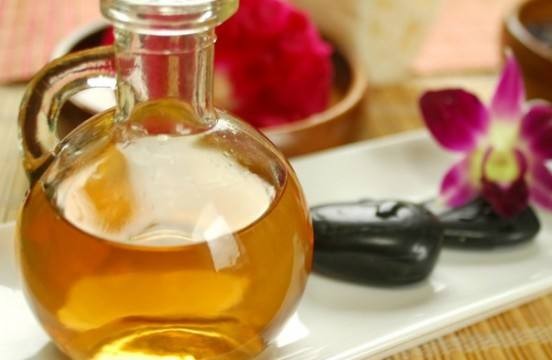
Massage Oil
Sage oil - Treat the mammary glands with soft massaging movements in the direction from the base of the breast to the nipples. Cover the bottom, top and sides of the mammary glands. Don't forget about your armpits.
- Classic massage movements are diluted by treating the chest in a spiral or clockwise direction to improve blood and lymph circulation. Do not put too much pressure on the mammary glands. Microtraumas will only aggravate the course of the disease.
- Gently massage the lumps, even if you feel pain.
- Finish the procedure with light patting movements of your fingertips. This method will improve the circulation of milk in the breast.

If the procedure causes too much pain, you can do it in the shower. Warm water will ease the pain.
Breast massage for lactostasis
If a woman nursing a baby feels pain and feels a lump, then self-massage at home can correct the situation at the initial stage of the process. The technique has strict rules.
Basic rules for massage:
- Wash your hands thoroughly and keep your nails trimmed. For massage, you can prepare the mixture yourself: add a drop of sage to a teaspoon of vegetable oil. You can use a rich cream. Hands should not be dry due to the risk of microcracks. Any oil or cream adds a relaxing effect.
- A relaxed state of the muscular system is a necessary condition for the effectiveness of the technique. You can soak a cloth in warm water and apply it to the painful area for 10 minutes. The ideal option is to get into the shower or take a relaxing bath. The water should not be hot.
- The massage begins with gentle, light movements around the breast towards the nipple. The technique is carried out from the periphery to the center clockwise. The chest is taken in the left hand, and the right one performs the movements.
- Massage the nipple with smooth movements; the massage should not cause a feeling of discomfort. It is also necessary to work on the armpits.
- Movements can be either stroking or rubbing; rough pressure is unacceptable.
- Particular attention is paid to the compaction zone, which is rubbed clockwise locally. Each lobe is massaged separately and thoroughly.
- You can use the hydromassage technique: a comfortable water temperature is adjusted, and the stream from the shower is directed onto the chest. The water should not hit painfully; the shower should be moved clockwise from the periphery to the nipple. A massage for 15 minutes relaxes the ducts and normalizes the outflow of secretions.
Read also:
What determines the quality of breast milk and how to improve it
Another self-massage technique involves lightly tapping the gland with a flat comb or knuckles. Upon completion of the technique, the woman should bend forward and shake her pectoral muscles a little to drain the milk. If the massage is effective, the milk is easily expressed and the breasts become soft.
Important to remember! After the massage, the breast is given to the baby or expressed by hand. If a high temperature rises and a woman feels weak and severe pain in the chest, then an urgent need to call a doctor at home. After only 3–4 days, lactostasis leads to the development of mastitis – inflammation of the mammary gland. Severe mastitis is treated surgically and is an indication to stop breastfeeding.
If home massage is not effective, you need to see a mammologist or gynecologist. There is a paid service when a breastfeeding specialist comes to a woman’s home and massages and pumps. Also, a good osteopath can cope with the problem in 1 session.
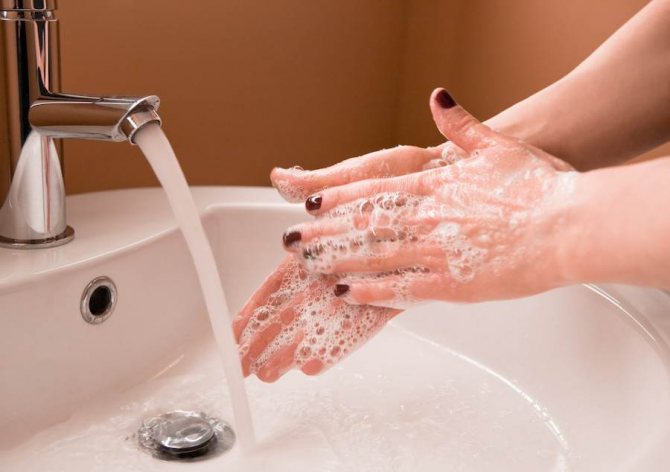
How to properly express milk after a massage?
Violation of the technique of expressing milk is one of the reasons for the development of lactostasis. It is not difficult to learn how to perform this procedure correctly:
- Before pumping, you can apply a heat compress or shake your breasts while leaning down. This will help improve milk flow.
- Grasp your chest with your arms above and below.
- Place the thumb and index finger of your lower hand on the nipple.
- Start gently massaging your breasts towards the areola.
- Apply gentle pressure to the breast while maintaining a consistent rhythm.
The procedure must be carried out several times a day, depending on the frequency of feeding the child. You should not resort to pumping if your baby consumes most of the milk on his own.
If lactostasis is caused by a narrowing of the ducts of the mammary glands, the doctor prescribes antispasmodics to improve milk flow. A breast pump can also be used for expressing.
what to do with lactostasis in a nursing mother
Nowadays, many women who decide to breastfeed want to organize this process naturally. The Soviet “regime” method, in which the breast was given to the child and taken away from him in hours and minutes, is no longer popular. Now the rule is: “the baby should suck as often and for as long as he wants.” However, with this approach, mothers discover even in the maternity hospital that the newborn can be on the chest almost constantly, even during sleep. After a few months, the mother will have some freedom, but for a long time feeding will remain a significant part of her day. These hours should not be a painful duty, but a time of pleasure, joy and peace. To make this happen, the collective female mind came up with various positions for breastfeeding. Using them, the mother will be able not only to give her child the best, but also to relax or have fun, and, if necessary, solve problems with lactation.
I suggest looking through all the feeding positions and listing those that you use or have used.
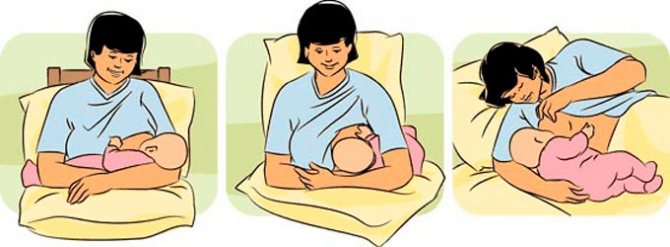
Pose 1 - classic: “cradle” Classic cradle The mother sits on a chair or in an armchair. The child is in her arms - her head is in the crook of her elbow, her lower back is in the palm of her second hand, her legs are supported by her forearm. The baby's belly should be parallel to the mother's belly. The cradle position when feeding while sitting is the most famous position for nursing. Women of older generations often used only one. In Soviet manuals they taught to breastfeed this way - sitting upright, holding the baby close to you with your arms. In fact, this position is designed specifically for 15-minute feedings at 3-hour intervals. You can’t sit like that for long - your whole body is tense and numb, your hands are busy. — Subtype 1(a): “cross cradle” Cross cradle A sitting mother holds the baby with one hand - opposite the nursing breast. His head rests in his mother's palm, and his body is supported by her forearm. The reverse cradle is even less comfortable than the direct one. This sub-pose was invented with one purpose - to free the hand. But the hand on which the double load falls becomes numb very quickly. After adjusting your grip or taking a sip of tea, you have to return to your previous position. — Subtype 1(b): “standing cradle” Standing The mother stands or walks, holding the baby on her chest with two hands: the head on the crook of the elbow of one, the butt on the forearm of the other. It's hard to imagine a less comfortable position. Women who are forced to feed this way for some time remember this period as a nightmare. Usually you have to feed standing immediately after childbirth, when sitting is impossible because of the stitches in the perineum, and feeding lying down is impossible or scary. The dubious advantage of the pose is the ability to rock the baby at the same time. It is much easier to do this while sitting or jumping on a fitball. — Features of the “cradle” position when using a pillow for feeding With a pillow Special pillows for nursing mothers gave the “cradle” a new life. Compact boomerang pillows with ties at the back fasten under the chest and allow you to free your hands. The baby is in the right place, the mother just needs to make sure that he remains turned to her with his stomach. The ties secure the pillow well, allowing you to get up and walk, for example, to the kitchen for a cup of tea. Pose 2 - relaxation: lying on the side Lying on the side Mom lies on her side with her legs bent. Her head is on the pillow and her shoulders are lower. (The higher the pillow, the more comfortable.) The baby's head lies in the crook of the elbow or under the armpit, his legs rest against the mother's knees. Thus, the mother seems to be protecting the baby with her body. This is the most comfortable way to feed. Ideal for both postpartum mothers who cannot sit and mothers of older children. Lying down with a feeding “runner” is often the only opportunity to rest during the day. One hand is always free - you can hold a smartphone in it and read on it, surf the Internet, watch something while the baby is busy with the breast. Sometimes it happens that babies sleep well during the day only with the breast in their mouth. Then the lying down feeding position is the mother’s only salvation; she can spend this hour or two with benefit for herself, without even physically tearing herself away from the baby. Or take a nap nearby. This is the position that is used when sleeping together. Thanks to her, the mother can sleep all night, and the baby can feed as much as he needs. The only drawback of this position is that you can only feed from the lower breast. But not changing breasts for 6-8 hours is fraught with stagnation, so mothers are forced to switch the baby to the other side several times in the middle of the night. This becomes optional if you master:
— Subtype of pose 2(a): lying on the side, with the upper chest Lying on the side with the upper chest Mom lies on her side with her knees bent. The baby is in the space between her legs and arm. In order for the baby to be able to reach the upper chest, the shoulder is moved forward, leaning slightly over it. It is convenient to raise one leg higher. If the baby is placed on the crook of the elbow, his head will rise higher, and a breast of sufficient size can be simply handed to him. The peculiarity of this position for feeding small breasts is as follows. The mother needs to lie partially on her stomach, with the lower breast under her, but the lower arm is still above the baby, preventing a complete turn over. For convenience, you can put your hand under your head. The baby is placed in the cavity created - the lower breast is now inaccessible to him, but the upper one is located right next to the face. Then mom simply gets up, changing sides. — Features of the lying position with a pillow If the mother has a pillow for feeding or for pregnant women, the baby can be placed on it so that he can reach the upper breast. A long pillow can also be used as a support for mom's back.
Pose 3 - anti-crisis: from under the arm From under the arm Mom sits straight, the child is under her armpit on the side at chest level with his head towards her knees. To support the baby, you can use a pregnancy pillow, or two stacked regular head pillows for adults. A rolled-up quilt will also work. This sitting position is more comfortable than the “cradle” position, since you do not have to bear the weight of the baby on yourself, and one hand is always free. But the downside is that you won’t be able to sit on a chair—you need a chair with wide armrests, and if you don’t have one, you’ll have to sit on the bed without back support. However, in this case, the inconveniences can be neglected, since the under-arm position, also known as the armpit position, or “grabbing the ball” (the child is held like an American football ball) is a magic couple-lifesaver in many problematic situations that arise during lactation . Incorrect grip. The armpit position gives the most complete grip control. The mother clearly sees exactly how the baby takes the breast and can correct any mistakes. "Lazy sucker." If the baby has difficulty sucking milk and is not gaining weight well, the mother can help him by squeezing the breast during feeding. To do this, she needs the free hand that this position provides (without overloading the other, like a “cross cradle”). Some babies quickly fall asleep without eating properly. In this case, it is convenient to use your free hand to disturb the sleepyhead and move the nipple in his mouth. Cracked nipples, painful attachment. If the mother developed cracks when she fed in the “cradle” or lying down, this position will allow the nipple to be positioned differently in the baby’s mouth. This reduces pain and prevents re-injury. If there are no cracks, but it still hurts during application, this is a signal of errors in grip, and they need to be corrected. Lactostasis. The choice of position for feeding during lactostasis depends on which particular milk lobe has stagnation. And it forms where milk is sucked out worst. The baby absorbs best the lobes towards which his chin is turned. The worst thing, accordingly, is the opposite. The most popular positions are those in which the baby's chin is directed towards the mother's belly, so the upper lobes of the breast are the worst to dissolve. This is where women most often experience stagnation. Using the underarm pose allows you to turn your head in the other direction. It is useful to feed in this position regularly - for prevention. The more varied poses are used, the less likely it is to stagnate. And if it has already arisen, then it is necessary to feed in the position that was previously ignored.
- Subtype of pose 3(a) - lying in jack Jack Mom lies on her side, the child next to her - with her feet towards her head. This position allows you to get all the benefits of the catch position, but still allows you to lie down. The downside is that the mother has to lie in the middle of the bed so that there is room for the baby's legs, and there is nothing to rest the pillow on. You have to use your hand instead of a pillow, but it quickly becomes numb. — Subtype of pose 3(b) — overhang Overhang The baby lies on his back, the mother gives him the breast from above, overhanging, and with her hand holding him in a position slightly to the side so that he can drink comfortably. Thanks to this unusual position, the baby can easily suck all the lobes. The force of gravity helps him. The mother can deliver the breast while standing on all fours over the baby: with her head to his feet, head to his head or across him - depending on which lobes need to be sucked. In this position, the body begins to hurt after a few minutes, but in a difficult situation it is worth it. You can ensure relative comfort by placing the child on the table and hanging over him, resting his hands on a hard surface.
Pose 4: Defying Gravity - Lying on Your Back
Lying on her back The mother lies or reclines on her back, leaning on a pillow, the baby is on her stomach to stomach. Other names for this position are “Australian” and “telephone”. Suitable for mothers who like to rest on their back. Both hands are free and you can even read a paper book. (Although newborns have to support their heads.) Not very popular because the baby has to suck the milk from the bottom up, and the force of gravity in this case works against it. But sometimes the pressure of milk from the breast is so strong that the baby choke. In this case, the “telephone” is simply irreplaceable. All of the above poses are relevant from day 1 of life until approximately 6 months. Or rather, until the time when an infant begins to sit and crawl. After this, the mother will no longer have to choose a feeding method, but will only have to make herself more comfortable. Her baby will deftly dock to her chest, surprising you with incredible acrobatic figures.
SOURCE
What physical procedures help with lactostasis?
In rare cases, when a woman is unable to overcome lactostasis with massage and regular expression of milk, the doctor prescribes physiotherapy. They help improve lymph circulation and blood circulation in the mammary glands, stop inflammatory processes, relieve pain, and relieve swelling.

Ultrasound or pulse therapy is used for treatment. At home, the breasts can be treated with Darsonval for 10–15 minutes. Particular attention should be paid to lumps in the mammary glands.
Physiotherapy procedures are contraindicated if a woman:
- acute form of mastitis;
- breast fibroadenoma;
- mastopathy;

- malignant breast tumor;
- diseases of the central nervous system.
The procedures are carried out in courses. The frequency and duration of sessions is prescribed by the doctor, based on the patient’s condition and the purpose of treatment.
Traditional methods
Treatment of lactostasis at home with folk remedies is quite feasible if the diagnosis has already been made by a doctor, but it is still not possible to cope with the disease by increasing the number of feedings and pumping. Therapy with folk remedies at home gives good results if you choose the right method and do everything according to the instructions.
Cabbage leaf
Cabbage is an effective, simple and cheap traditional medicine. However, you need to use this fruit correctly:
- First you need to remove the dense white leaves from the fork, leaving the inner ones.
- Only fresh sheets should be used.
- Before the procedure, crush the leaf a little to make it softer. You can pre-lubricate it with honey.
- Place a cabbage leaf on your chest, securing it with standard insulation, as when applying a compress.
- Apply the cabbage in such a way as to create not only a thermal, but also a moderate cooling compress.
There are several recipes for using this fruit that will effectively overcome lactation problems. For example, a fresh leaf is slightly crushed, and then greased with butter and sprinkled with salt. Cabbage and salt relieve swelling well.
You can also use another recipe, which is suitable when the pathological condition is accompanied by severe pain. It is necessary to pass several cabbage leaves through a meat grinder, add 2 tbsp. l. yogurt and make a compress from the resulting pulp. The cabbage leaf can be applied warm. First, it is scalded with boiling water, then smeared with honey and a compress is applied.
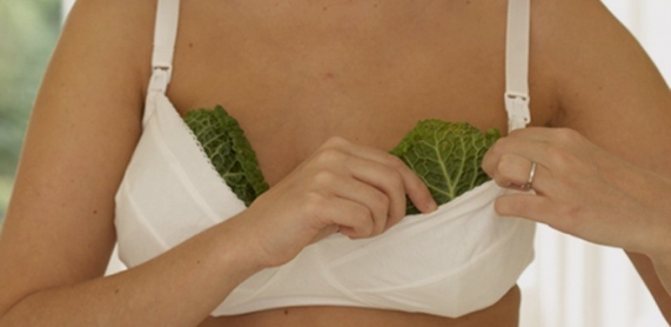
You need to make sure that the cabbage leaf does not dry out, so you need to change it often.
Vodka compress
The following recommendations should be followed carefully and with caution. The prepared piece of gauze (or bandage) is moistened in water diluted with vodka in a 1:1 ratio. The compress is applied to the chest and wrapped in something warm for a long time. You can keep it until the compress dries completely.
Under no circumstances should you apply a compress of pure (undiluted) vodka or alcohol, otherwise you may get a skin burn. For every woman, motherhood is considered true happiness.
Chamomile and eucalyptus compress
Effective help with lactostasis at home - preparations of anti-inflammatory and absorbable plants. Chamomile flowers and eucalyptus leaves have these properties. Raw materials can be prepared at home or purchased at a pharmacy. The decoction for the compress is prepared as follows:
- chopped dried herbs are taken in equal parts to make 2 tbsp. spoons;
- the raw materials are filled with boiling water (one glass);
- over low heat or in a steam bath, the composition is brought to a boil and immediately removed;
- the warm broth is filtered.
A piece of gauze is moistened in the resulting composition and applied to the chest to resolve painful lumps. To enhance the therapeutic effect, you can flavor the chamomile-eucalyptus decoction with a spoon of vodka.
Onion
There is a fairly simple way to remove lactostasis at home, using onions. One medium-sized onion needs to be baked in the oven or microwave until it becomes soft; there is no need to remove the skin. After cooling, cut it into several parts and apply the cut side to the sealing area.
- Clay treatment at home
The onion should be warm, but not hot, there should be no discomfort. It must be kept for an hour. Regular use of this product helps to soften the formed compaction in the gland. Lactostasis can also be treated with a cake made from onions and honey.
A medium-sized onion must be chopped using a grater or blender, add 1 tbsp to the resulting pulp. l. honey, mix everything thoroughly. After this, gradually add flour, the dough should be elastic.
Note! Rye flour is best suited for this product. When the dough is ready, you need to roll out a flat cake from it, apply it to your chest and secure everything on top with a bandage. This procedure is best done in the evening, leaving the compress on until the morning. Therapy continues until the seal is completely reabsorbed.
Honey
What can you use at home if not honey - it relieves inflammation, resolves scars and seals, and has antiseptic properties. The use of honey cake in the treatment of lactostasis is an effective part of an integrated approach to the problem. It is prepared by mixing a bee product with rye flour. The finished cake is placed in the sealed area and kept under cellophane until dry.
You can mix liquid honey with aloe juice, rye flour and a piece of soft butter. The composition applied on gauze to the chest is kept for 20-30 minutes under polyethylene and a warm cloth. Honey is applied to the glands in its pure form; it should be thick and candied. Exposure time is a quarter of an hour.
Other recipes
Lactostasis and mastitis are similar diseases, and women often confuse them. It is necessary to clearly understand that if lactostasis is not stopped in time, such a dangerous pathology as mastitis may well develop from it, so treatment must begin at the earliest stages of the disease. To do this, use the following recipes:
- Potato. Using this remedy you can get rid of swelling and pain. The potatoes should be chopped using a coarse grater, placed on a compacted area and left for 20 minutes. It is recommended to make a compress for lactostasis immediately after feeding the baby. The procedure can be performed 8-10 times a day until symptoms disappear completely.
- Rice starch. A very effective treatment method, which consists of constantly applying a starch-based paste. To prepare it, rice starch should be diluted with a small amount of water to form a thick paste. Apply to the mammary gland immediately after feeding and cover with a soft cloth. Wash off before next feeding. Continue using the product until the stagnation is completely eliminated.
- Tea mushroom. Using this method, you can eliminate blockage of the milk ducts in the shortest possible time. To do this, it is enough to apply a piece of mushroom to the sore spot several times a day immediately after feeding for 60-90 minutes. Continue treatment until the blockage resolves.
- Cottage cheese. Lactostasis causes painful sensations at the site of compaction, which can be relieved with a compress of low-fat cottage cheese. It is enough to apply cold low-fat cottage cheese to the problem area immediately after feeding and leave for 15 minutes. This compress relieves pain and reduces swelling.
- Camphor oil. It is used for compresses. It is necessary to moisten a piece of gauze in camphor oil and apply it to the inflamed skin. Fix the bandage on top with cling film and wrap the chest with a scarf or handkerchief. It is recommended to keep the compress for at least 5 hours.
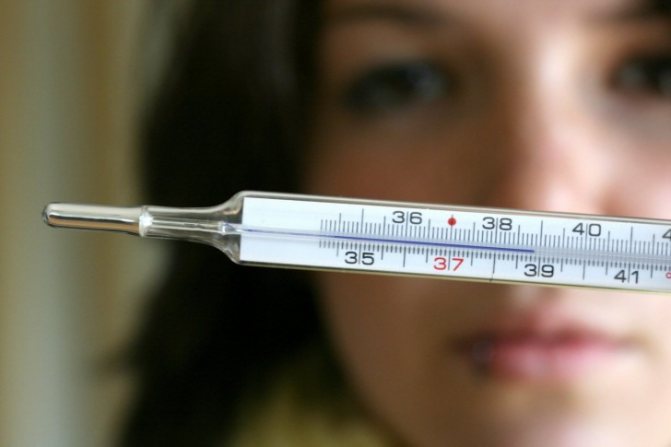
If treatment with folk remedies is accompanied by a high temperature, it is recommended to consult a mammologist.
Compresses and rubbing for lactostasis
If the cause of lactostasis is excessive production of breast milk, it is recommended to use compresses and rubbing with camphor oil, alcohol or honey. These remedies help cope with the inflammatory process and relieve swelling. Before using them, you should make sure there is no allergic reaction.
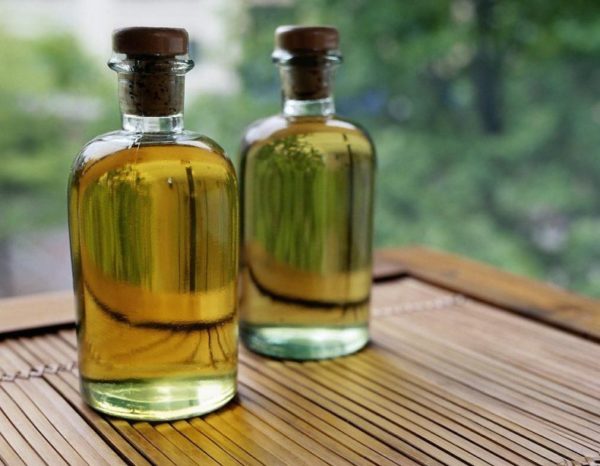
Kafmor oil Alcohol

Honey
The mammary glands are rubbed with camphor and alcohol before bedtime. Compresses are made from honey and sterile tissue. To prevent the baby from refusing to take the breast, it is necessary to wash it well before feeding.
Recommendations for nursing mothers
- It is necessary to understand the cause of lactostasis and eliminate it.
- If there is stagnation, then there is no need to try to strain it immediately after feeding the baby. The brain perceives this action as a signal that the baby does not have enough milk, and secretion by the mammary glands increases, and lactostasis progresses.
- To reduce lactation, limit the amount of liquid you drink and exclude warm drinks from your diet.
- Camphor-alcohol compresses can cause milk burnout and stop the lactation process.
- Any treatment method will be more effective if it is accompanied by a diet. Fatty, spicy, hot, rich foods are excluded from the diet. The use of beets and prunes is recommended.
- A fresh cabbage leaf compress on the painful area may help. The vegetable is washed, a leaf is separated from it, pricked with a knife until droplets of juice appear and placed under a bra for a period of 3 hours.
It is important to know! Lactostasis in the mother does not affect the child’s body. To alleviate a woman’s condition, the baby is applied to the sore mammary gland as often as possible. Active sucking expands the ducts and eliminates congestion.
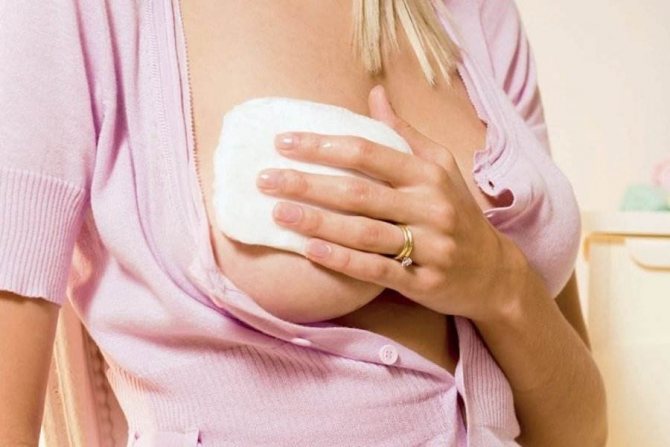
Read also:
When does milk usually start coming in after childbirth and is it possible to speed it up?
Prevention of lactostasis
To avoid the development of lactostasis, first of all, it is necessary to regularly breastfeed the baby. This will help prevent fluid stagnation in the mammary glands.
The following measures will also help protect yourself from the appearance of lactostasis:
- Control the amount of fluid you consume per day. If your milk production is too active, drink less water.
- Develop a feeding routine for your baby that is comfortable for you. Follow it strictly.
- Choose comfortable and breast-supporting underwear made from natural fabric.
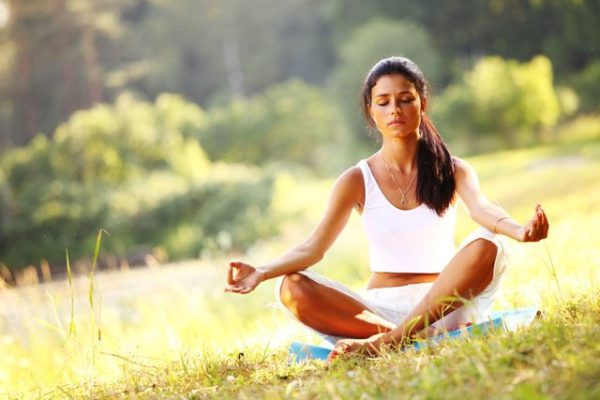
Rest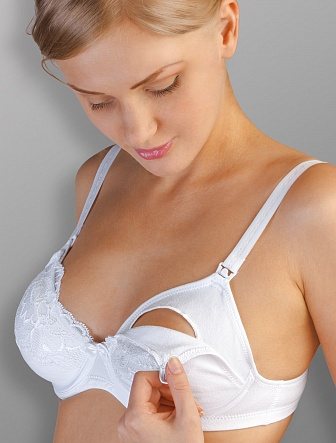
Comfortable underwear - Take care of your health and consult a doctor promptly.
- Get more rest;
- Try not to be nervous.
During the postpartum period, a woman’s psycho-emotional state affects her health, and therefore the quality of breast milk. For this reason, it is important to remain calm, try to avoid stressful situations, and get enough sleep when the opportunity arises.
Breast massage during lactostasis and subsequent pumping are effective methods of combating stagnation of breast milk. But if these procedures do not help in the short term, the doctor may prescribe physical therapy or medication.
A visit to a specialist should not be postponed, as stagnation of milk can lead to purulent inflammation of the mammary glands. In this case, you will have to completely stop breastfeeding the baby.
Special exercises for lactostasis
In addition to massage, a technique that is effective for lactostasis is a set of exercises aimed at normalizing the outflow and inflow of fluids to the mammary gland.
- Raise your arms up and bend them at the elbows. Rest your forearms on a jamb or other vertical support. During the exercise, the chest works, it performs elastic springing movements to the support and back.
- If a lump has formed in the chest, it can be easily pinched with the fingers of the opposite hand and gently pulled down. Raise your free arm, bend it at the elbow and perform springy push-ups from a vertical support. If the seal slips out of your hand, it is gently grasped again.
The main load from the exercises falls on the pectoral muscle. The sensations from the technique should be comfortable, and the result should be the elimination of lactostasis and the resorption of compacted areas.
Read also:
Principles of home treatment and assistance with lactostasis

